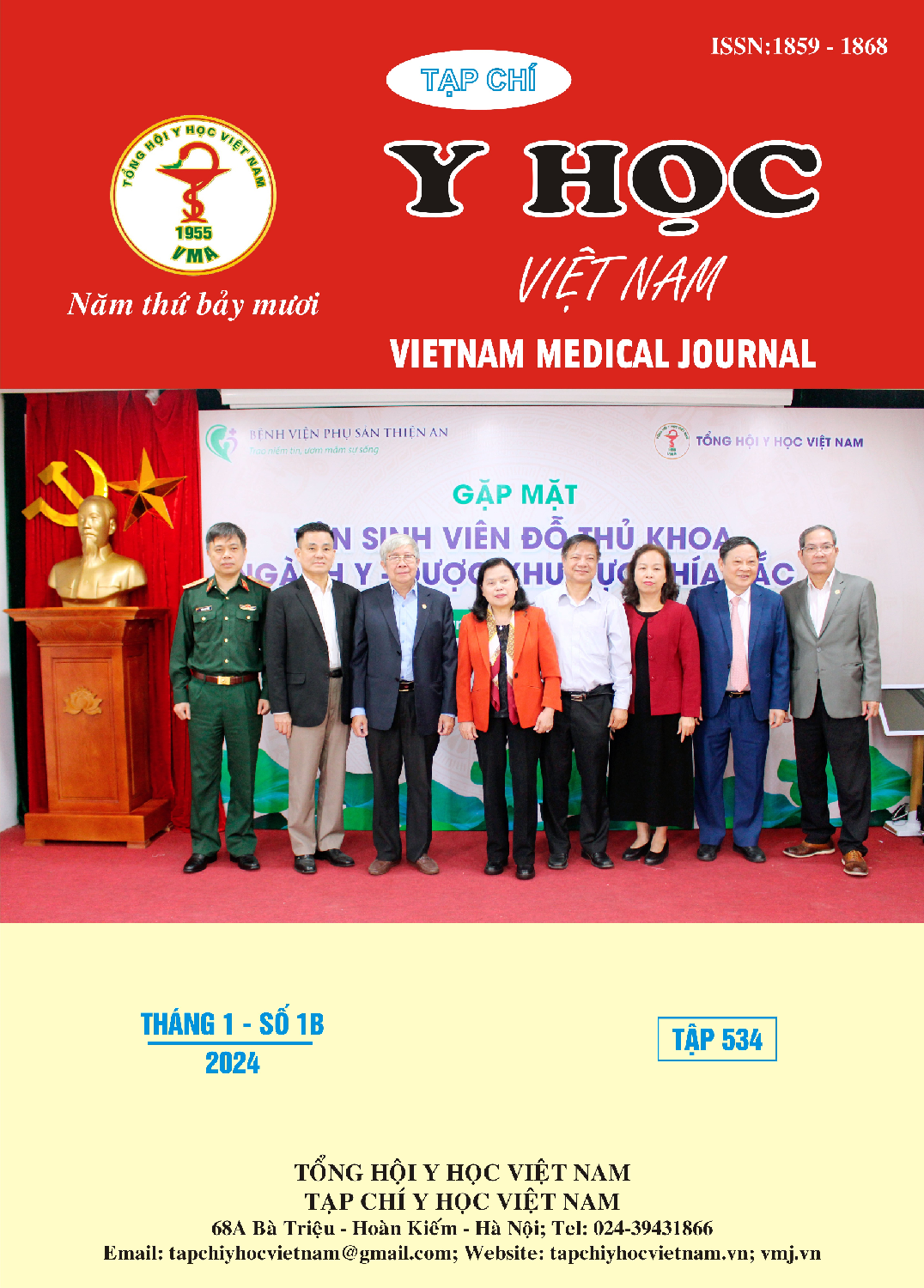EFFECTIVENESS OF HYALURONIC ACID 0.2% IN SUPPORTING NON-SURGICAL TREATMENT OF PERIODONTITIS
Main Article Content
Abstract
Objective: This current study aimed at evaluating the role of Hyaluronic Acid (HA) 0.2% in supporting the non-surgical treatment of periodontitis through clinical indicators including Plaque Index, Gingival Index, Periodontal Pocket Depth, Clinical Attachment Loss (PI, GI, PPD, CAL) before treatment and 6 weeks after treatment. Subjects and methods: 18 patients (17 males:1 female) corresponding to the number of samples per group of 18 were included in the study. The half-mouth research method was conducted. After assessing the oral hygiene status and confirming that the patient was not allergic to HA, the patient was instructed on oral hygiene and having supragingival scaling using an ultrasonic instrument. Patients were treated with 2 main appointments: initial time (T0), after 6 weeks (T6). Periodontitis non-surgical treatment included oral hygiene instructions, scaling and root planning, with or without combined with HA gel 0.2% (Gengigel®) at time T0; the intervention steps were performed the same for all participants. The assessment of periodontal clinical indices (PI, PPD, GI and CAL) was performed similarly at T0 and T6. The study was approved by the Ethics Committee in Biomedical Research of the University of Medicine and Pharmacy at Ho Chi Minh City. Results: In the intervention group (treated with HA 0.2%), there were 328 periodontal pockets included 111 shallow periodontal pockets (accounting for 34%), 162 medium periodontal pockets (accounting for 49%) and 55 deep periodontal pockets (accounting for 17 %). In the control group (treated without HA 0.2%), there were 300 periodontal pockets included 88 shallow periodontal pockets (accounting for 29%), 156 medium periodontal pockets (accounting for 52%) and 56 deep periodontal pockets (accounting for 19%). The difference between these two groups is not statistically significant (p>0.05). In each group, after 6 weeks of treatment, periodontal indices decreased with statistical significance compared to time T0 (p<0.05). 6 weeks after treatment, PPD and CAL index in the intervention group were lower than in the control group and had statistical significance (p<0.05). Conclusion: Whole-mouth periodontal indices PI, GI, PPD, CAL at 6 weeks after non-surgical treatment of periodontitis were statistically significantly reduced compared to the initial time in both groups. However, HA had the effect of reducing PPD and increasing the level of clinical adhesion at average periodontal pocket locations.
Article Details
References
2. Al-Shammari NM, Shafshak SM, Ali MS (2018), “Effect of 0.8% Hyaluronic Acid in Conventional Treatment of Moderate to Severe Chronic Periodontitis”, The Journal of Contemporary Dental Practice, 19(5), 527-534.
3. Basheer Omer, Asim S, Bakri G (2018), “The effect of local application of hyaluronan gel as an adjunctive to scaling and root planing in chronic periodontitis patients”, African Journal of Dentistry, 6(5), 163-170.
4. Fraser JRE, Laurent TC, Laurent UBG (1997), “Hyaluronan: its nature, distribution, functions and turnover (Minisymposium: Hyaluronan)”, J Intern Med, 242, 27–33.
5. Gontiya G, Galgali SR (2012), “Effect of hyaluronan on periodontitis: A clinical and histological study”, J Indian Soc Periodontol, 16(2), 184-92.
6. Hung HC, Douglass CW (2002), “Meta-analysis of the effect of scaling and root planing, surgical treatment and antibiotic therapies on periodontal probing depth and attachment loss”, J Clinical Periodontol, 29(11), 975-86.


